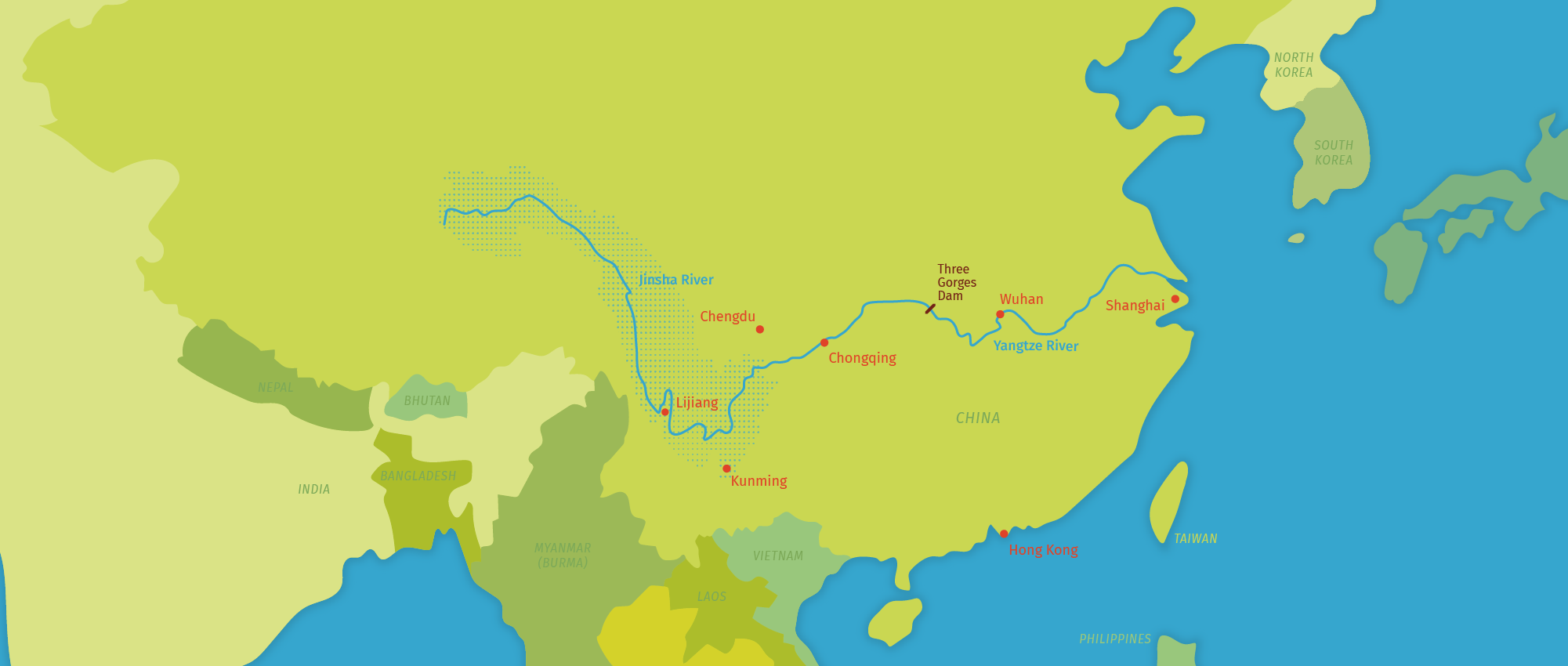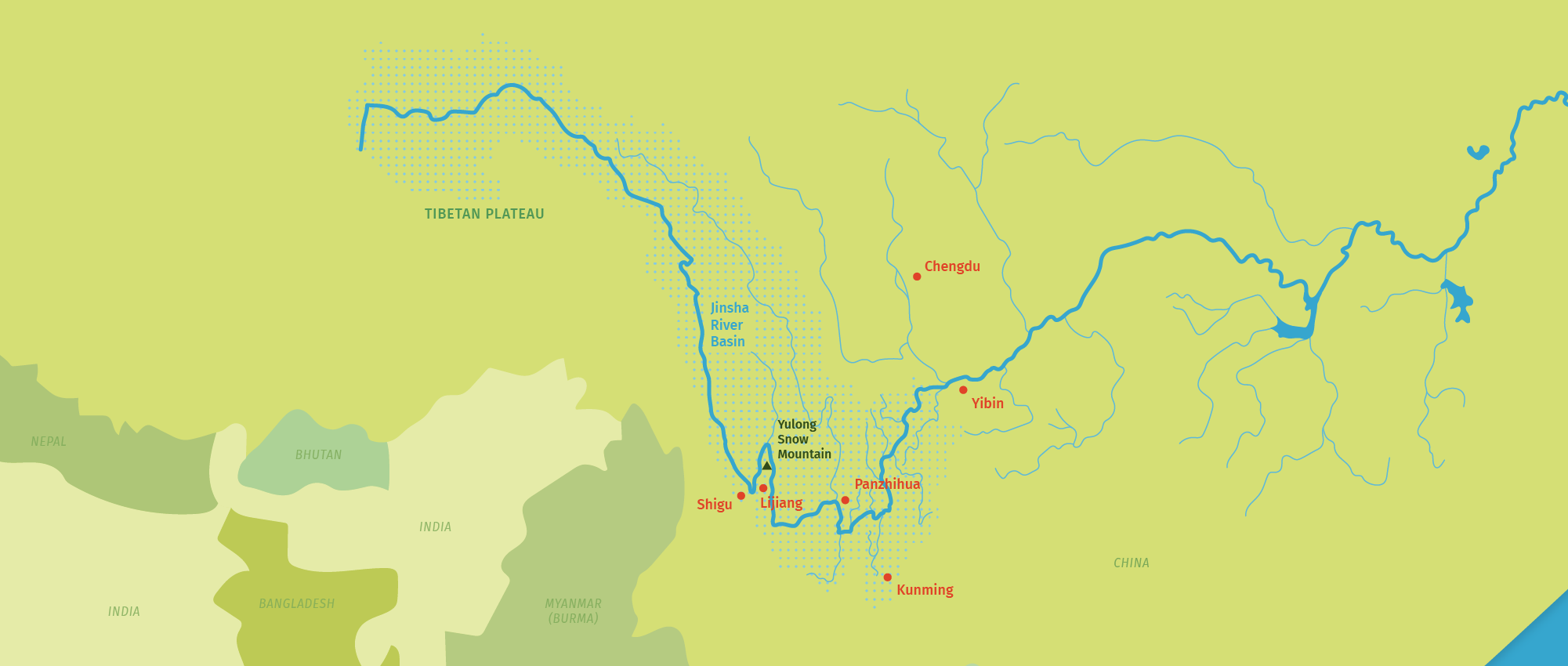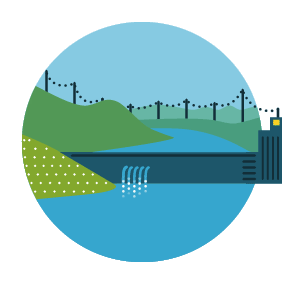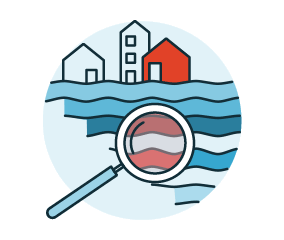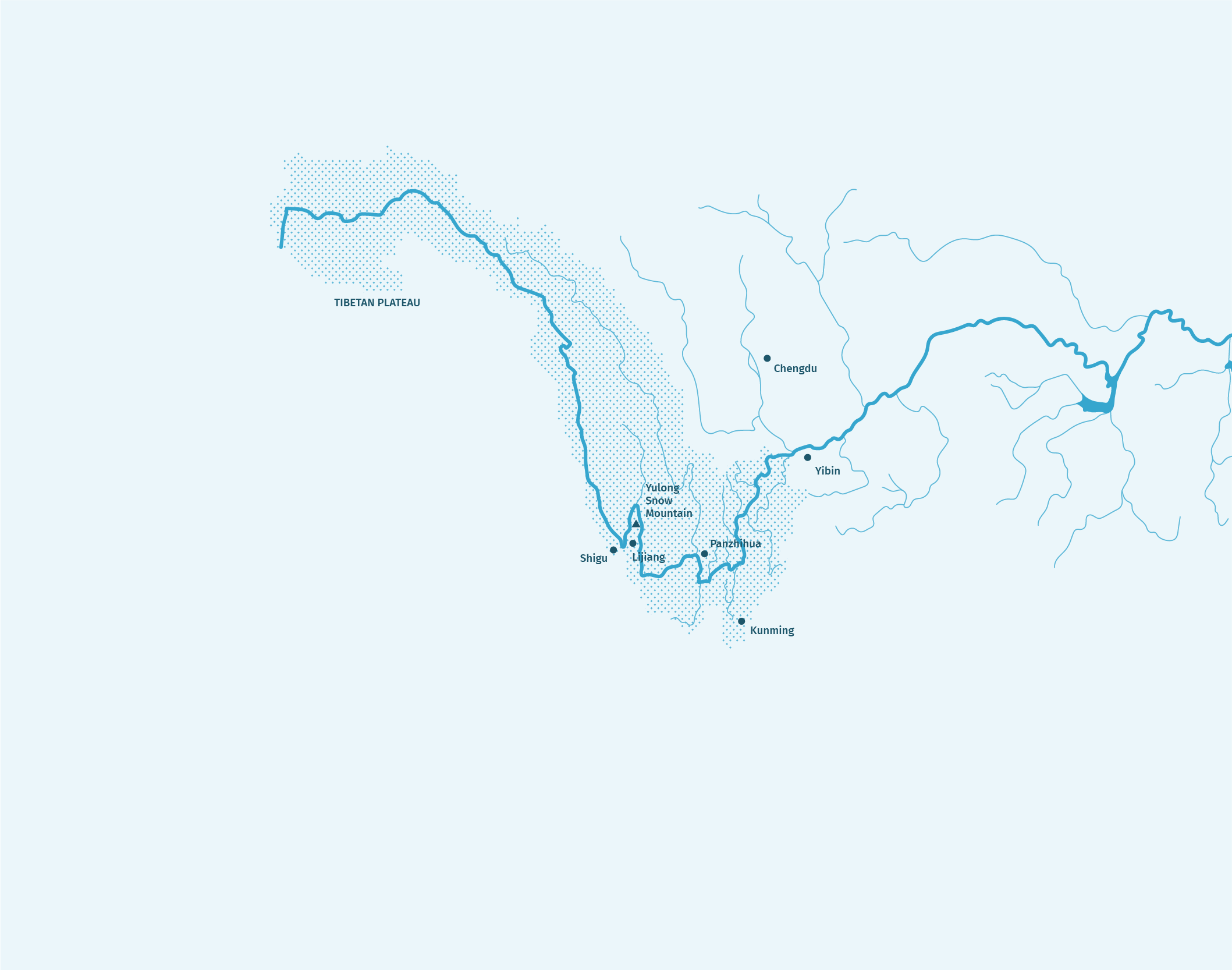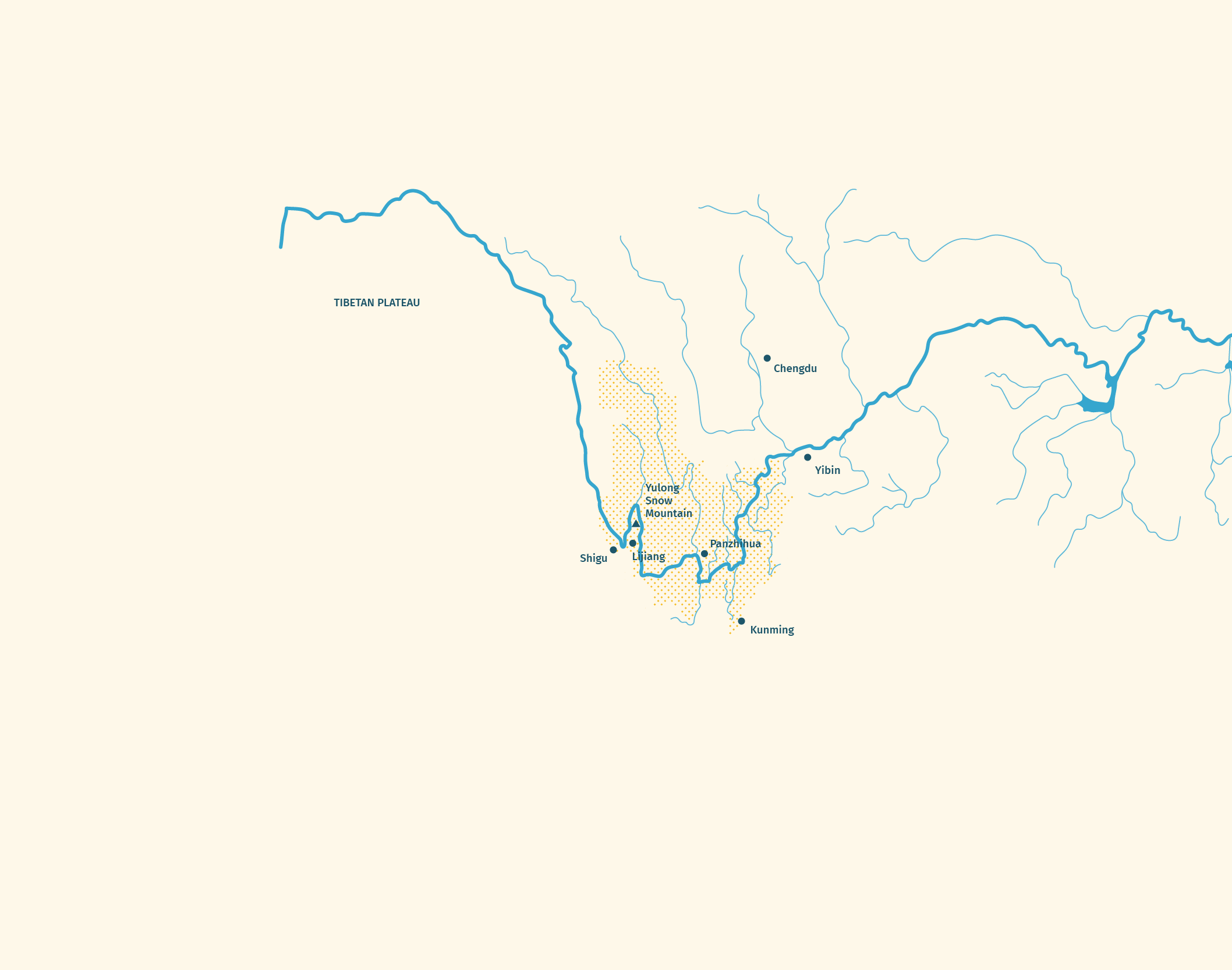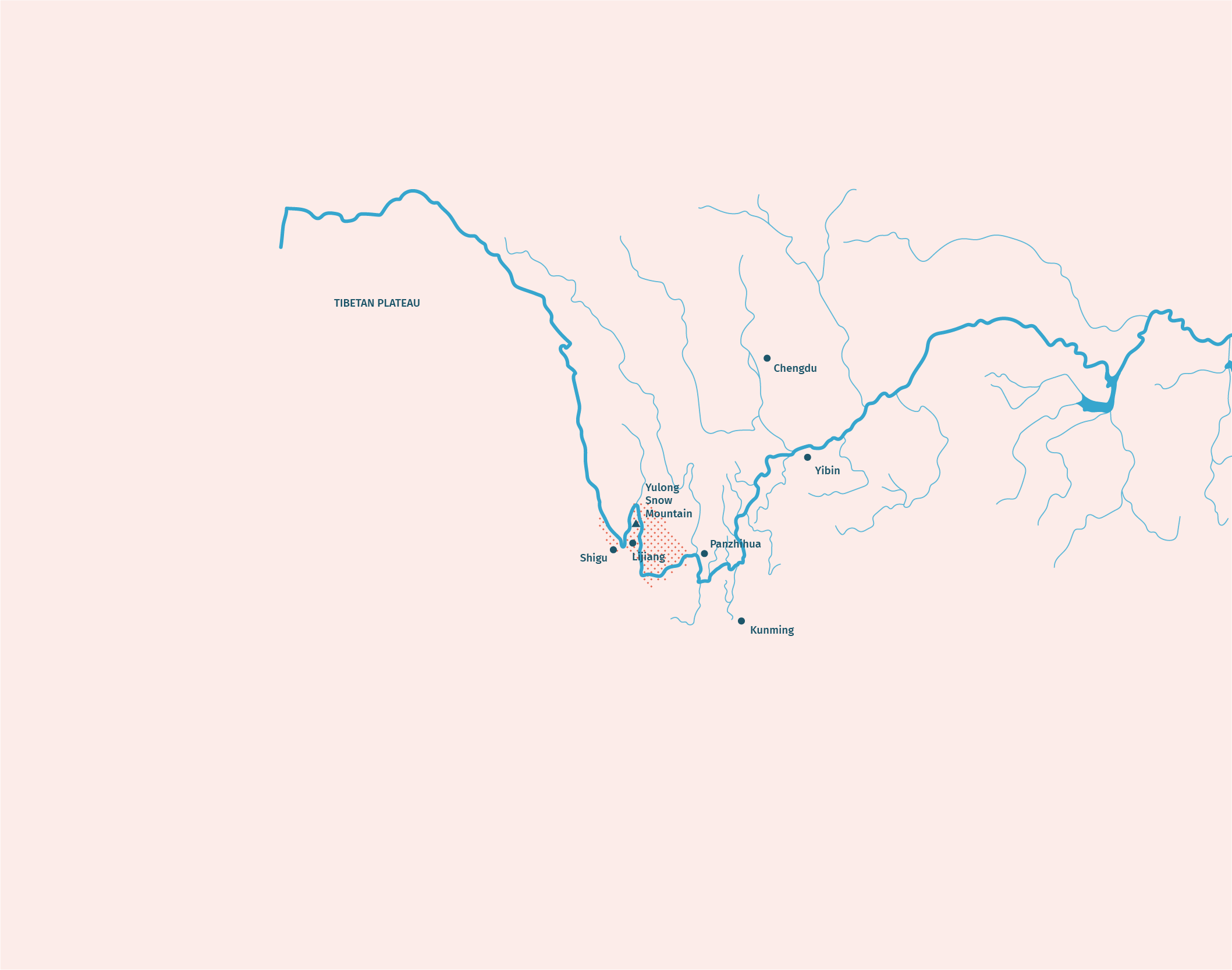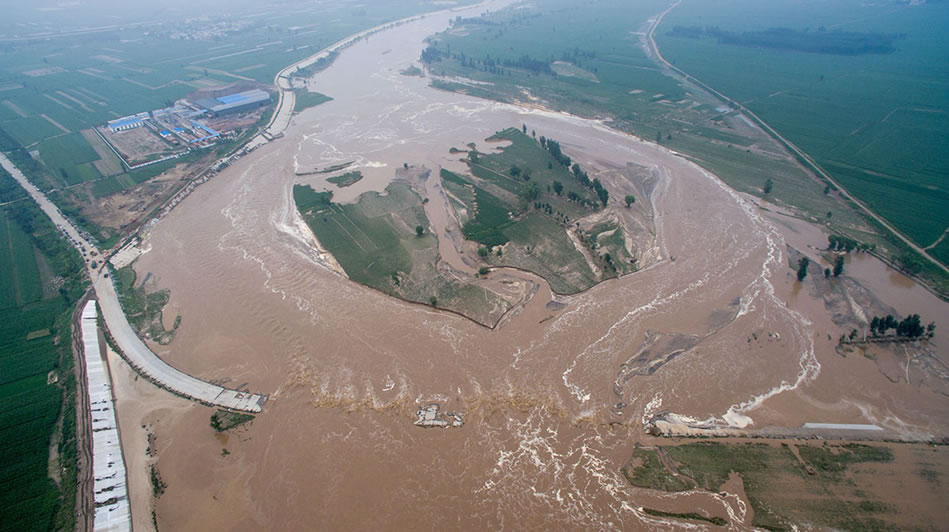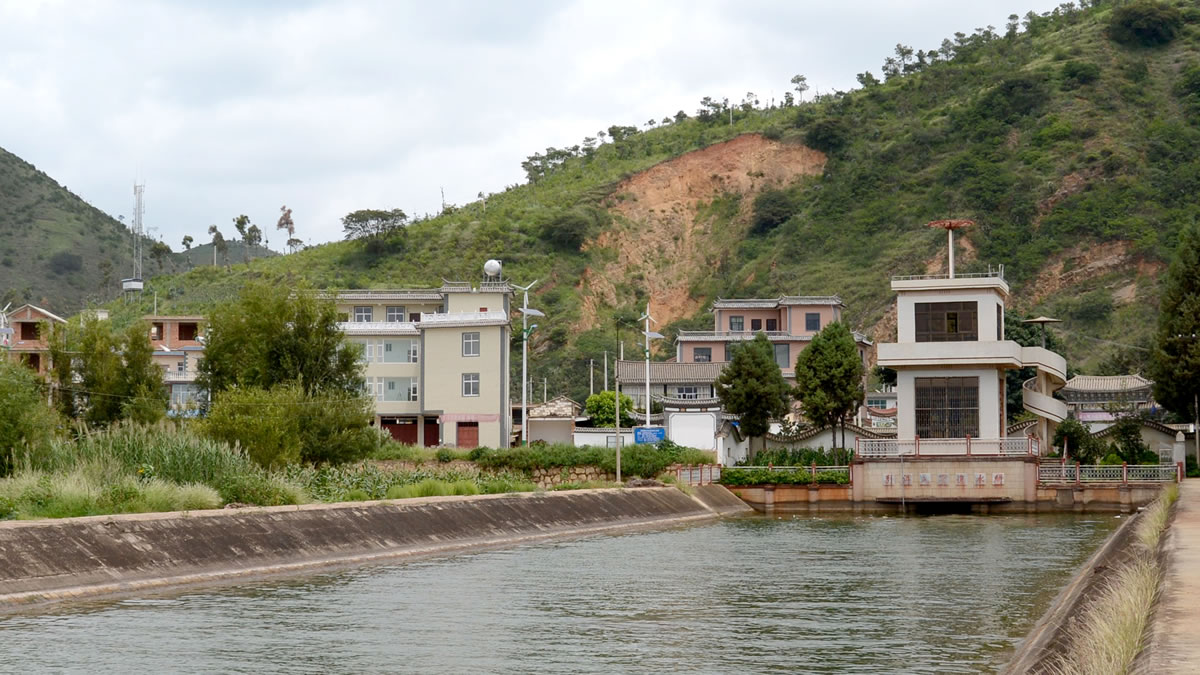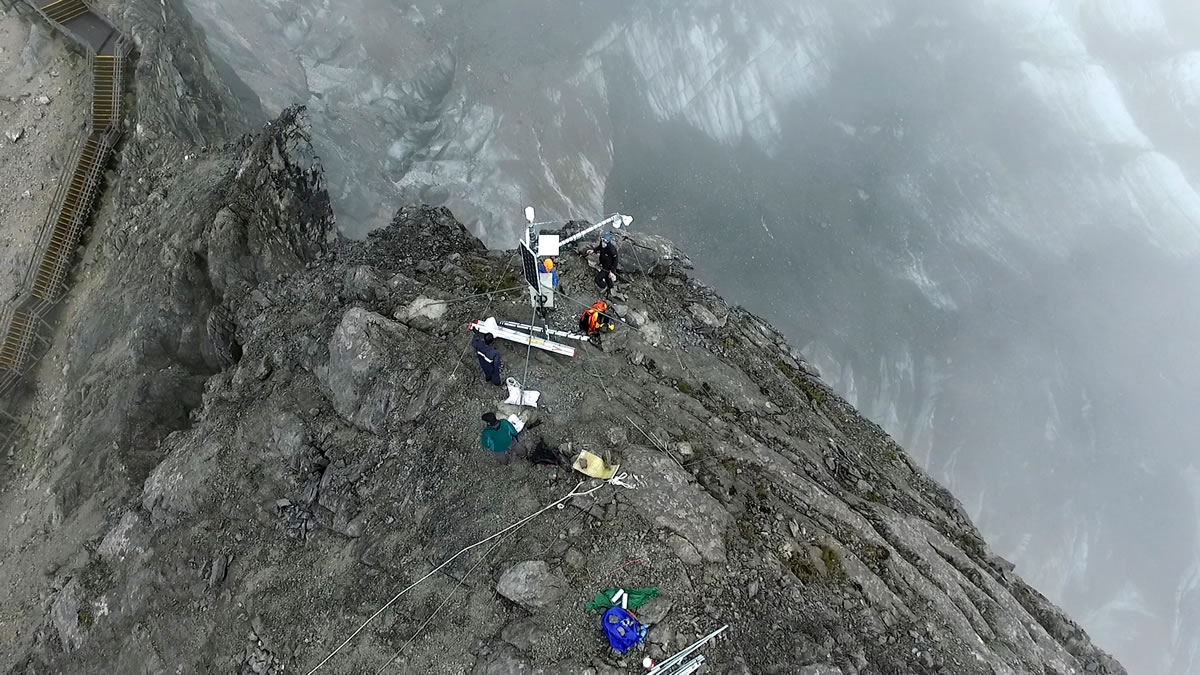What are the impacts of climate change on water supply, extreme events and aquatic ecosystems in the Jinsha River Basin? We analyzed these impacts based on climate change scenarios for temperature and precipitation. Water characteristics which we elaborated earlier served as a baseline.
Climate change scenarios
Scenarios describing expected climate change in the Jinsha River Basin are of critical importance to understand how climate change affects the sustainable use of water resources and extreme events such as floods and droughts. Based on the predictions of multiple general circulation models (GCM) we elaborated a set of 24 climate change scenarios for daily temperature and precipitation on a grid covering the entire Jinsha River Basin. 8 scenarios cover the near future (2021-2050) and 16 scenarios cover the far future (2070-2099). The use of several climate scenarios forms the basis for a subsequent uncertainty analysis regarding the impacts of climate change.
For the downstream part of Jinsha River Basin, a temperature rise of 1 – 2°C in the near future and 1.5 – 5°C in the far future is expected (compared to the 1981 – 2010 baseline). Whereas the trend towards higher temperatures is unambiguous, the trend in average precipitation is more uncertain. Most climate change scenarios show an increase in precipitation for the upstream and middle part of the Jinsha River Basin, whereas the change for the downstream part of the region is uncertain. This corresponds to current trends, which underlines the plausibility of the climate change forecasts.
Check out the results of the study: Factsheet Climate Change Scenarios
Impacts on different sectors and stakeholders
For the entire Jinsha River Basin, we analyzed impacts of each climate change scenario on sectors like hydropower (e.g. electricity production), agriculture (e.g. crop suitability) and aquatic ecosystems (e.g. fish habitat quality). The impact assessment included extreme events (e.g. flood frequency, flood intensity, flash floods, agricultural and hydrological drought). Additionally, we have studied the impacts on industry, residential areas/tourism and agriculture for the Lijiang area, by analyzing water balance, identifying water deficits and considering future socio-economic trends.
Opportunities and challenges due to climate change have been identified and form the basis for adaptation strategies and measures.
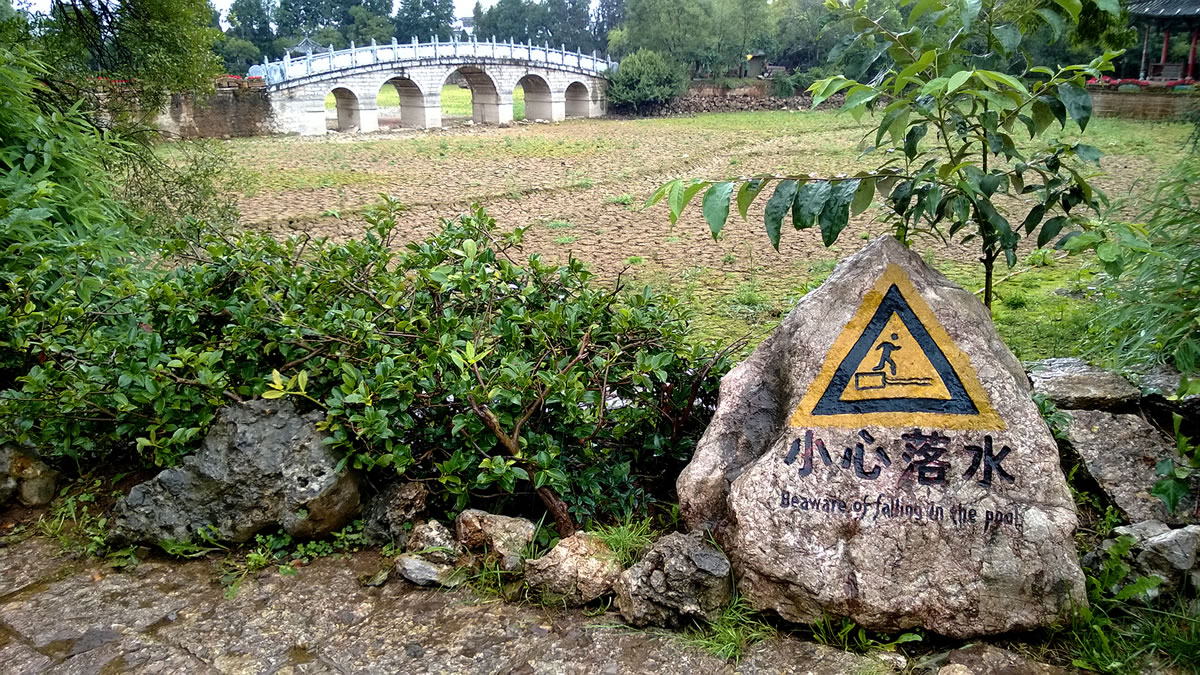
Lijiang has experienced increasing water crises in the last 2-3 decades. River courses and ponds such as Black Dragon Pond have started to dry up.
Impacts on water supply and demand in Lijiang City
The impact on water supply and demand in Lijiang City we evaluated using a water allocation model. The results show that the future demand for agricultural irrigation water is expected to increase by 3% (near future) to 7% (far future); due to urbanization and an increase in tourism, domestic water demand is expected to double. The assessment shows that Lijiang is already suffering from water scarcity today. And the water supply and demand situation will become more critical in the future, especially during the dry season.
Impacts on extreme events
We analysed the frequency and intensity of different types of extreme events such as flood and drought in the Jinsha River Basin under 24 different climate scenarios. The results indicate that for mainstream river floods of a given occurrence rate, flood intensity is expected to increase significantly. These results should draw attention to further review the design of flood capacity measures and the management of events, where given thresholds (e.g. warning levels) are exceeded.
Residential areas, agriculture, industry, critical infrastructure, energy production, waterways and ecosystems are mainly affected by extreme events influenced by climate change. Impacts consist mainly of financial losses, but also of fatalities due to flash floods.
Due to the rising number of days with intense rain, flash floods in tributary areas are expected to occur more frequently in the future, creating more damage.
During the dry season, increasing evaporation due to higher temperature dominates possible changes in precipitation patterns. Therefore, the frequency of hydrological drought events will increase. Regarding agricultural drought, there can be a significant increase in crop water demand due to rising evapotranspiration, which could, if irrigation water is scarce, lead to a higher frequency, intensity and duration of agricultural drought events.
Impacts on aquatic ecosystems
The water temperature rise is the most important factor affecting cold-water fish habitat by shortening their spawning period. The interactions among different species will induce variations into the fish community structure and eventually result in many ecological responses such as alterations in species distributions, reduced biodiversity, invasion of alien species and food web structure.
Furthermore, the combined effects of hydropower stations such as impoundment, alteration of hydrological regimes, blocking effect and hypolimnetic discharges will accelerate the ecosystem’s degradation. The restoration of longitudinal connectivity should be a high priority of rehabilitation works in these systems to make essential spawning habitat accessible.
Impacts on hydropower
Average annual runoff as well as runoff during the wet season are expected to increase significantly. However, due to limited turbine capacity, hydropower production will not increase proportionally.
Impacts on agriculture
With the increase of yearly precipitation and temperature in the Jinsha River Basin, the area suitable for the cultivation of important crops may raise, shifting further north and to higher altitudes. However, the water demand of crops is expected to increase.
